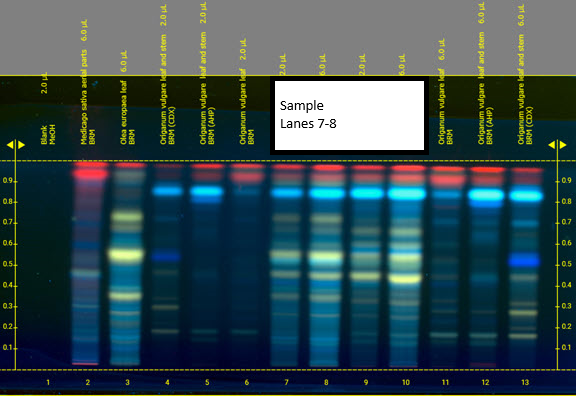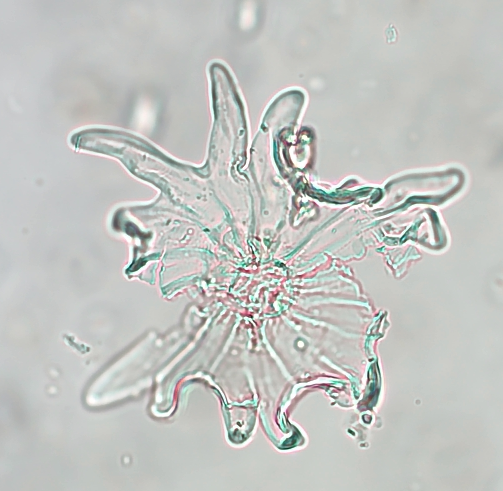Case Study: Uncovering Botanical Adulteration in Oregano Leaf Using HPTLC and Microscopy

Background
A batch of Oregano (Origanum vulgare leaf) was submitted for identity verification and quality assessment. As a widely used culinary and medicinal herb, oregano is expected to meet strict botanical specifications. The sample was labeled as pure oregano leaf, prompting a comparative analysis against authenticated reference materials.
Analytical Findings: HPTLC Fingerprinting
Using High-Performance Thin-Layer Chromatography (HPTLC), analysts observed extraneous bands in the sample that were not present in the oregano reference fingerprint. To further investigate, Olive (Olea europaea) leaf reference materials were included on the same HPTLC plate. Several bands in the oregano sample matched the color and Rf values of the olive leaf reference, suggesting the presence of undeclared plant material.

Microscopic Investigation
Microscopic analysis provided additional clarity. The sample exhibited distinct trichomes and fibers characteristic of olive leaf anatomy. These cellular features, absent in pure oregano, confirmed the presence of Olea europaea.
Interestingly, the sample also contained trichomes consistent with Rock Rose (Cistus sp.) leaf, a separate botanical species. These findings indicated that the oregano sample was not only adulterated with olive leaf but also contained material from a third plant source.



Conclusion & Implications
This case highlights the power of orthogonal testing methods, combining chemical fingerprinting with microscopic analysis, to detect botanical adulteration. While the product was labeled as oregano, it contained multiple undeclared plant materials, potentially compromising efficacy, safety, and regulatory compliance.
For manufacturers and suppliers, this underscores the importance of routine identity testing, especially for botanicals prone to economic adulteration. Ensuring botanical integrity is not just a regulatory requirement. It’s a commitment to consumer trust and product authenticity.
Start the Conversation
Experiencing a challenge and need support? We can help.



